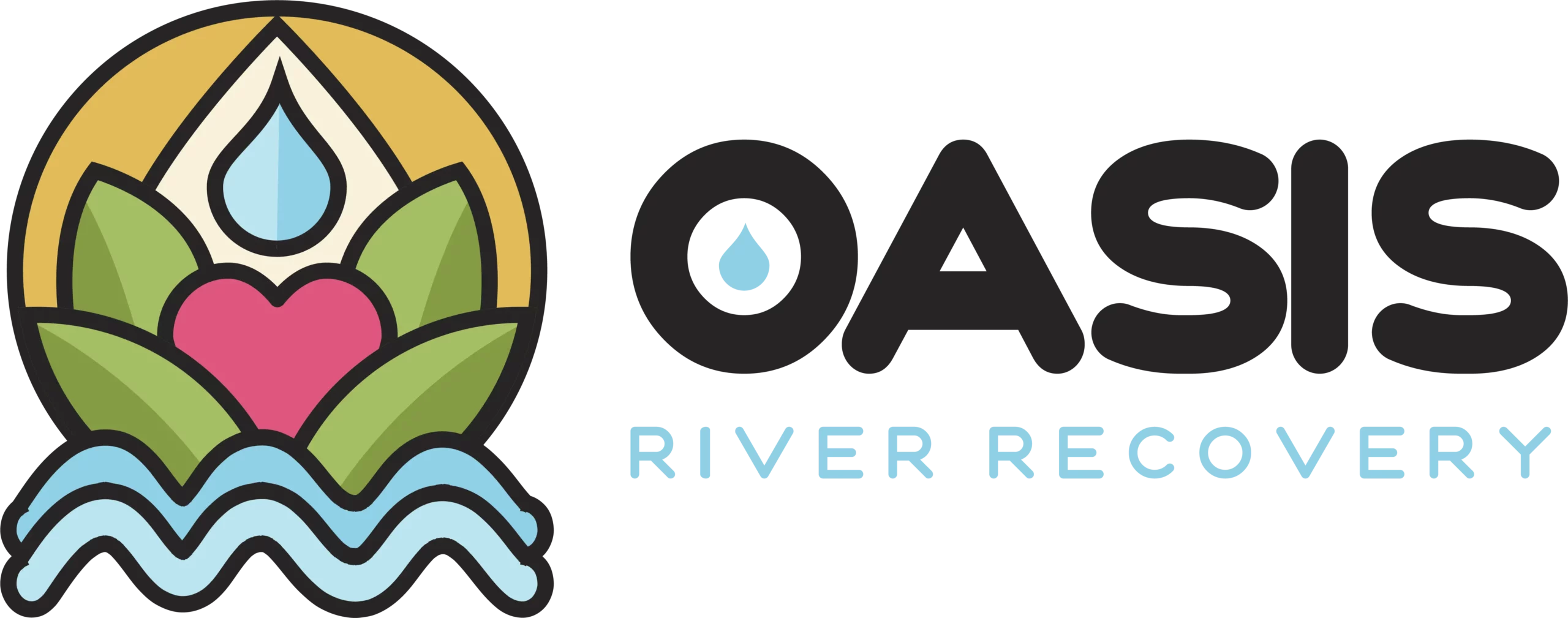Using art to heal has been around for millennia, the evidence of which can be found in many traditions and cultures worldwide. Creative expression can be a helpful form of therapy. Through art, clients explore and change feelings, emotions, and behaviors. Art therapy for addiction helps clients uncover underlying issues that may contribute to substance abuse and helps them develop skills to better manage emotions and cope with triggers. Art therapy offers a safe way for clients struggling with addictions to channel negative emotions into something positive rather than making harmful or destructive choices.
What is Art Therapy?
Art therapy is a therapeutic technique that has been used since the 1940s to treat a range of mental health issues, from depression to eating disorders. Art therapy is conducted by trained mental health professionals and combines psychological therapy with creating art. This type of treatment uses a range of creative mediums including coloring, sculpture, writing, and more for therapeutic recovery. Art therapy is based on the idea that creative expression can improve mental well-being and foster healing. Art therapy can help a person increase self-awareness, resolve emotional conflict, develop coping skills, and change behavior — all things important in addiction recovery care. Art therapy can be conducted in an outpatient addiction treatment services program or as part of inpatient treatment.
Art Therapy and Addiction: What Science Says
A 2023 study published in PLOS One, found that engaging in art therapy led to positive brain changes in people with alcohol use disorder. In addition, there was a decrease in depression and impulsivity in participants who made art. The study authors recommend expressive art interventions as part of rehab for people with alcohol use disorders.
Another study, published in The Arts in Psychotherapy, examined lifestyle changes needed for recovery. It was found that art therapy helped participants in recovery make a positive change in their lives.
A University of Kansas study found that women in residential treatment for substance abuse disorder who engaged in one-hour art therapy sessions had a reduction in “delay discounting.” This term refers to devaluing outcomes that require waiting. This has to do with the ability to delay gratification and overall self-control. People who abuse substances tend to engage in delay discounting and have a harder time delaying gratification. The fact that art therapy helps reduce this is quite significant.
Connect With Us Now
Reach out to us now for immediate support, or let us know the best time to contact you through our confidential callback service. Your journey to healing is just a conversation away.

Art Therapy Techniques
Art therapy may be conducted in groups or 1:1. In addiction treatment, art therapy may include a wide variety of techniques and mediums. These can often be tailored to each individual client and may include:
- Drawing
- Coloring
- Writing
- Painting
- Photography
- Sculpting
- Finger painting
- Collage
- Crafting
Art Therapy Activities
Even those who are not artistically inclined can benefit from art therapy activities. Examples of therapeutic art therapy activities that can help relieve stress and improve emotional functioning include:
- Write in detail about a relaxing place. Outline everything about this place: how it looks, smells, and feels.
- Express stressful events. Communicate difficult events that happened during the week via art.
- Paint a safe place. Create an image of safety where you feel calm and secure.
- Paint your emotions. Identify any feelings that you experience and paint them.
- Play a song that mirrors your mood. If you play a musical instrument, choose a song to play that reflects your mood.
- Create a journal. Write about your emotions, feelings, and behaviors.
- Tell a story about your family through collage. Identify family conflicts and relationships via a collage.
- Draw a picture of yourself. Accept any flaws that you draw in the picture.
Benefits of Art Therapy for Addiction
People who are experiencing substance abuse issues may have a difficult time identifying or expressing how they are feeling. Art therapy can help them learn more about themselves and share what they are feeling. This type of therapy can also help a person feel more in control of their life. This is very important for those in recovery. Here are some other benefits of art therapy:
- May decrease depression – Studies have shown that art therapy can decrease depression and combat negative moods. People who struggle with addictions are often diagnosed with co-morbid depression. Art therapy can help treat both issues.
- Stress relief – Art therapy can provide a distraction from stressful experiences and situations. One study found that just 45 minutes of making art resulted in a reduction of the stress hormone cortisol.
- Outlet for negative emotions – Creating can help us process and release difficult emotions that may be difficult to articulate otherwise.
- Healthy self-expression – A large part of recovering from addiction is learning how to express yourself in healthy ways. Art can provide a way for healthy self-expression.
- Prompts behavior change – Research has found that art therapy can help participants learn to change their behaviors both towards themselves and others.
- Provide a sense of control – Mastery of art projects can help participants gain a sense of control and empowerment, which can be beneficial for those struggling with substance abuse.
- Allows us to resolve problems – Many people tend to resort to name-calling or yelling to try to resolve conflicts with others. Art therapy is a great way to work through conflicts constructively.
- Enables self-reflection – Self-reflection is very important in the recovery process. It helps you identify things that trigger use. Art therapy allows for self-reflection. It helps you gain insight into thoughts, feelings, and behaviors that trigger use. This is essential for resolving triggers.
- Provides a break from distressing thoughts – Many people who abuse substances experience frequent negative thoughts. Creating art allows you to focus on something else that is calming. It provides peace from thoughts that can be overwhelming.
- Relaxes the nervous system – Research indicates that nervous system activation is related to addictive behaviors. Creating art helps calm the nervous system down.
- Enhances mindfulness – Mindfulness refers to your ability to stay engaged with your emotions, bodily sensations, and thoughts. Mindfulness is very powerful when it comes to addiction recovery care. Art therapy helps increase mindfulness. The connection is so strong that there is a sub-type of art therapy called mindfulness-based art therapy (MBAT).
- Improves trauma processing – Exposure to traumatic experiences has been linked to substance abuse. Talking about trauma in therapy can sometimes be difficult. Art therapy provides a safe way to deal with traumatic memories.

Art Therapy Vs Art in Therapy
Art therapy is usually conducted by a qualified art therapist who holds a master’s degree or higher in counseling or a related field. They usually have an additional art therapy credential.
Art therapists may serve clients in many settings from hospitals to private therapy practices. In many states, art therapists are licensed by the state.
Art may also be used in sessions by substance abuse counselors who are non-art therapist practitioners. Doing art in these sessions provides many of the same benefits that you get from sessions with an art therapist. Studies have found that the simple act of creating helps decrease anxiety and negative mood.
Things to Consider
If you are thinking about art therapy as part of your addiction treatment, there are some things you should know. Here are some things to keep in mind as you participate in art therapy for addiction.
You Don’t Have to Be Artistic
Many people assume that art therapy isn’t for them because they lack artistic skills. However, art experience is not required for participation in art therapy. A person doesn’t have to be “good at art” or an artist to benefit from art therapy. Anyone can do it. The goal isn’t creating the best-looking artwork. The focus is on emotional healing and expression.
There Are Many Ways You Can Participate
You may participate in art therapy in a variety of ways. Sometimes, it is part of a partial hospitalization or intensive outpatient program. You might also do art therapy while in a hospital or women’s rehab program.
Anyone Can Do It
There’s a misconception that art therapy is only for children. However, anyone can do art therapy no matter their age or gender. But, art therapy can be particularly helpful for those who suffer from addictions, depression, PTSD, or anxiety.
Find a Therapist Who Specializes in Addiction
Not all art therapists specialize in art therapy for addiction. Look for a therapist or counselor who has experience conducting art therapy with those who have substance abuse disorders.
There Are No Mistakes
When you create art as part of your addiction treatment, try to remember that there are no mistakes. Avoid going back and erasing your work, focusing on whether or not your technique is good, and getting stuck on small details. Instead, focus on the process of creating. Work on managing any anxious thoughts that you have about your artwork.
Art Therapy Is a Complement to Other Treatments
Art therapy isn’t a cure-all for substance abuse and it may not be right for everyone. Treating substance abuse usually requires multiple therapies. Art therapy is just one component of a wider addiction treatment services program. It is a very good complement to other therapies like trauma-informed care and mindfulness meditation. When combined with other treatments, art therapy is very effective for addiction.


